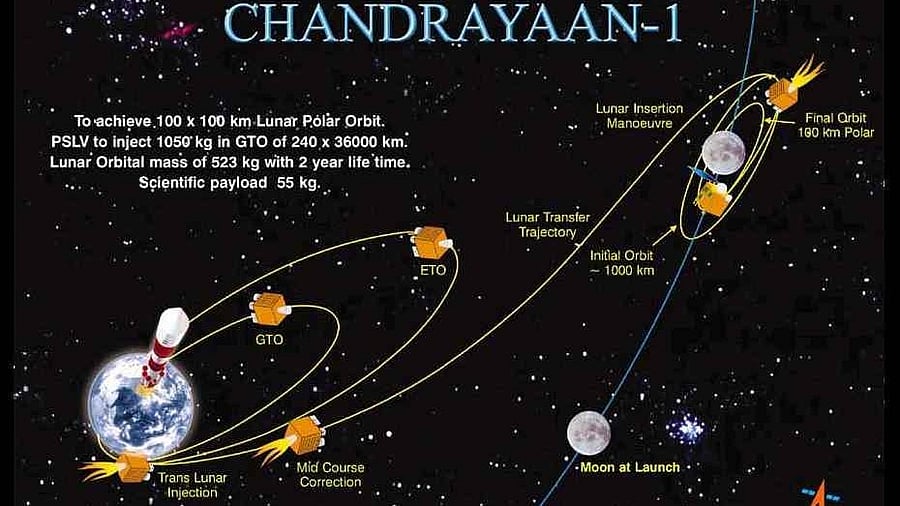
The research, published in the journal Nature Astronomy, found that the electrons may have aided the formation of water on the lunar body.
Credit: ISRO website
Research at the University of Hawai’i (UH) built on data collected by Chandrayaan-1 may provide insights on the origin of water ice previously discovered in the moon's permanently shadowed regions.
Led by Shuai Li, a planetary scientist at the UH at Manoa, the research found that high-energy electrons in the Earth’s plasma sheet are contributing to weathering processes on the moon and the electrons may have aided the formation of water on its surface. The 'plasma sheet' is an area of trapped charged particles within the magnetosphere around the Earth which is controlled by the earth’s magnetic field.
Li and the co-authors of the paper analysed the remote sensing data collected by the moon mineralogy mapper instrument on board the Chandrayaan-1, India’s first lunar exploratory mission, between 2008 and 2009. The study was published in Nature Astronomy.
The magnetosphere acts as a protective shield that prevents space weathering and solar radiation from impacting the Earth. Solar wind pushes the magnetosphere and stretches it, making a long tail on the night side. The plasma sheet within this magnetotail consists of high-energy electrons and ions that may be sourced from the Earth and the solar wind.
Water formation in the moon has been primarily attributed to solar wind – composed of high-energy particles like protons – as it bombards the lunar surface. Inside the magnetotail, however, there are almost no solar wind protons and water formation was expected to drop to nearly zero, UH quoted Li as saying.
New sources of water
To Li’s “surprise”, the remote sensing observations showed that water formation in the Earth’s magnetotail is almost identical to the time when the moon was outside of the magnetotail. “This indicates that, in the magnetotail, there may be additional formation processes or new sources of water not directly associated with the implantation of solar wind protons. In particular, radiation by high-energy electrons exhibits similar effects as the solar wind protons,” Li, an assistant researcher in the UH Manoa School of Ocean and Earth Science and Technology, said.
UH noted that understanding water concentration and distribution on the moon is critical to understanding its formation and evolution, and providing water resources for future human exploration.